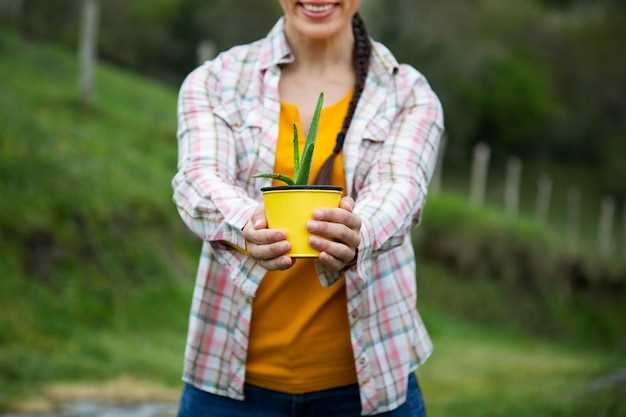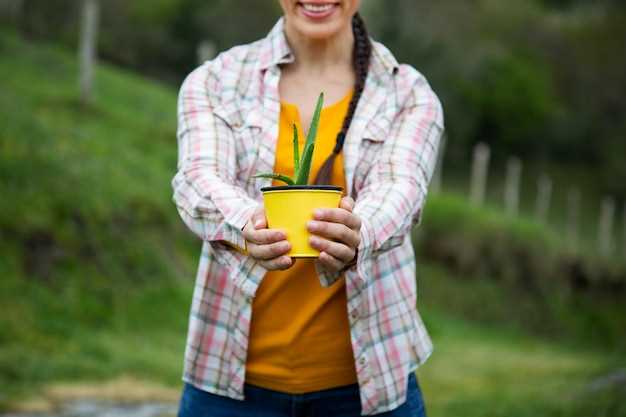

As garden enthusiasts, we are well aware of the vital role that watering plays in nurturing our beloved plants. However, finding the ideal watering vessel can often be a perplexing task. With a myriad of options available, it is crucial to select a watering can that not only meets our gardening needs but also enhances our overall experience.
Within this enlightening compendium, we will embark on a journey to explore the diverse world of watering cans. From their humble beginnings to the innovative designs of today, we will delve into the history and evolution of these indispensable tools. Along the way, we will uncover the distinctive features and functionalities that set each watering can apart, empowering you to make an informed decision.
Prepare to be captivated by the myriad of materials, shapes, and sizes that watering cans come in. Whether you prefer the classic elegance of a metal can or the lightweight convenience of a plastic alternative, we will discuss the pros and cons of each option. Additionally, we will highlight the importance of ergonomic design, ensuring that your watering can becomes an extension of your hand, providing comfort and ease during those long gardening sessions.
Furthermore, we will explore the various watering techniques and strategies that can be employed to optimize plant growth and health. From the delicate misting of delicate flowers to the gentle showering of thirsty shrubs, we will equip you with the knowledge to tailor your watering approach to the unique needs of each plant. With our expert tips and tricks, you will become a master of the art of watering, fostering a flourishing garden that will be the envy of all.
Understanding the Importance of a Good Watering Can
A comprehensive understanding of the significance of a high-quality watering vessel is essential for any avid gardener. The proper selection and utilization of this indispensable tool can greatly impact the health and vitality of plants, ensuring optimal growth and blooming.
Recognizing the value of a well-designed watering can involves acknowledging its role as a facilitator of efficient and precise irrigation. A proficient watering can enables gardeners to deliver the right amount of water to plants, promoting hydration without causing waterlogging or drought stress. By providing a controlled and gentle flow, it allows for even distribution, preventing soil erosion and minimizing the risk of damage to delicate foliage.
Moreover, a good watering can possesses ergonomic features that enhance user comfort and convenience. Its well-balanced design, comfortable handle, and appropriate weight distribution make watering sessions less strenuous, reducing the strain on the gardener’s body. This ensures that the task of watering remains enjoyable and sustainable, enabling gardeners to tend to their plants with ease and enthusiasm.
Another crucial aspect to consider is the material composition of the watering can. Opting for a durable and corrosion-resistant material, such as stainless steel or high-quality plastic, guarantees longevity and reliability. Additionally, a well-constructed watering can with a sturdy construction minimizes the risk of leaks and spills, preventing wastage of water and ensuring efficient use.
Furthermore, a good watering can offers versatility in its design, accommodating various gardening needs. Different nozzle options, such as shower or spray settings, allow for customized watering techniques suitable for different plant types and growth stages. This adaptability ensures that plants receive the appropriate amount of water, tailored to their specific requirements.
In conclusion, understanding the importance of a good watering can is fundamental for gardeners seeking to optimize their plant care practices. By selecting a watering can that combines functionality, durability, and versatility, gardeners can ensure the well-being and prosperity of their beloved plants, fostering a thriving garden environment.
Factors to Consider When Selecting a Watering Can
When it comes to tending to your garden, choosing the right watering can is an essential decision. The watering can you select can greatly impact the efficiency and effectiveness of your watering routine. To ensure you make the best choice, there are several factors to consider.
1. Capacity
One of the first factors to consider is the capacity of the watering can. The capacity determines how much water the can hold, and it should align with the size of your garden. A larger garden may require a watering can with a larger capacity to minimize the number of refills needed, while a smaller garden may benefit from a smaller capacity can for easier handling.
2. Material
The material of the watering can is another important consideration. Common materials include plastic, metal, and ceramic. Plastic cans are lightweight and affordable, but they may not be as durable as metal or ceramic options. Metal cans are sturdy and can withstand outdoor conditions, but they may be heavier to carry. Ceramic cans are aesthetically pleasing but can be fragile and prone to breakage.
3. Spout Design
The design of the spout is another factor to think about. A long and narrow spout allows for precise watering, making it ideal for reaching plants in tight spaces or hanging baskets. On the other hand, a wider spout can provide a more generous flow of water, making it suitable for larger plants or areas that require more water coverage.
4. Handle Comfort
Considering the comfort of the handle is crucial, especially if you have a large garden or plan to spend a significant amount of time watering. Look for a watering can with an ergonomic handle that provides a comfortable grip. This will help prevent hand fatigue and make the watering process more enjoyable.
5. Additional Features
Lastly, consider any additional features that may enhance your watering experience. Some watering cans come with a detachable rose attachment, which can provide a gentle shower-like spray for delicate plants. Others may have a built-in water level indicator, allowing you to monitor the amount of water remaining in the can without opening it.
By taking these factors into account, you can choose a watering can that suits your gardening needs and preferences. Remember, finding the right watering can is an investment in the health and vitality of your plants.
Different Types of Watering Cans and Their Pros and Cons
When it comes to watering your plants, having the right watering can is essential. There are various types of watering cans available, each with its own advantages and disadvantages. In this section, we will explore the different types of watering cans and discuss their pros and cons.
1. Traditional Watering Cans
Traditional watering cans are the most common type and are often made of metal or plastic. They typically have a long spout and a handle for easy pouring. One of the main advantages of traditional watering cans is their durability. They can withstand rough handling and are less likely to break or crack. However, they can be heavy when filled with water, making them less suitable for individuals with limited strength or mobility.
2. Watering Cans with a Fine Spray Nozzle
Watering cans with a fine spray nozzle are designed to provide a gentle and even distribution of water. They are ideal for delicate plants or seedlings that require a light misting. The fine spray nozzle helps prevent overwatering and reduces the risk of damaging the plants. However, these watering cans may have a smaller capacity and may need to be refilled more frequently.
Overall, the choice of watering can depends on your specific needs and preferences. Consider factors such as the size of your garden, the types of plants you have, and your own physical abilities. By selecting the right watering can, you can ensure that your plants receive the proper amount of water without causing any harm.
Choosing the Right Size and Capacity for Your Watering Can

When it comes to selecting the perfect watering can for your gardening needs, size and capacity play a crucial role. The size of your watering can determines how much water it can hold, while the capacity refers to the amount of water it can deliver with each pour. Finding the right balance between size and capacity is essential for efficient and effective watering.
Consider the Size of Your Garden
Before choosing a watering can, it’s important to consider the size of your garden. A larger garden will require a watering can with a larger capacity to ensure you can water all your plants without constantly refilling. On the other hand, if you have a small garden or only a few potted plants, a smaller watering can may be more suitable.
Think about Your Physical Abilities
Another factor to consider when selecting the size and capacity of your watering can is your physical abilities. If you have limited strength or mobility, a smaller watering can with a lighter weight may be easier for you to handle. Conversely, if you have no physical limitations, a larger watering can with a higher capacity may be more convenient as it will require fewer trips to refill.
Additionally, consider the weight of the watering can when it is filled with water. A larger can with a higher capacity may become heavy and difficult to carry when full, so it’s important to choose a size that you can comfortably manage.
Balance Watering Frequency and Efficiency
Choosing the right size and capacity for your watering can also involves finding a balance between watering frequency and efficiency. A larger watering can with a higher capacity may allow you to water more plants at once, reducing the time spent refilling. However, if you have plants with different watering needs or prefer to water each plant individually, a smaller can with a lower capacity may be more suitable.
Consider the types of plants you have in your garden and their specific watering requirements. Some plants may require frequent, light watering, while others may need a deep soak. By understanding the needs of your plants, you can choose a watering can that allows you to water them effectively and efficiently.
In conclusion, selecting the right size and capacity for your watering can is essential for successful gardening. By considering the size of your garden, your physical abilities, and the watering needs of your plants, you can find a watering can that meets your requirements and makes watering a breeze.
Features to Look for in a High-Quality Watering Can
When it comes to selecting a top-notch watering can for your gardening needs, there are several key features that you should consider. These features can greatly enhance your watering experience and ensure that your plants receive the proper care they deserve.
First and foremost, a high-quality watering can should have a sturdy construction. Look for a can made from durable materials such as stainless steel or heavy-duty plastic. This will ensure that your watering can withstand the rigors of regular use and last for years to come.
In addition to durability, a good watering can should have a comfortable handle. Opt for a can with an ergonomic design that fits comfortably in your hand. This will make it easier to carry and pour water without straining your wrist or hand muscles.
Another important feature to consider is the capacity of the watering can. The size of your garden and the types of plants you have will determine the ideal capacity for your needs. A larger capacity can hold more water, reducing the need for frequent refills, while a smaller capacity can be more manageable for smaller gardens or indoor plants.
Furthermore, a high-quality watering can should have a well-designed spout. Look for a can with a long, narrow spout that allows for precise watering. This will enable you to target the water directly at the base of your plants, minimizing water waste and ensuring that the roots receive adequate hydration.
Lastly, consider the overall design and aesthetics of the watering can. While not essential for functionality, a visually appealing can can add a touch of style to your gardening routine. Choose a design that suits your personal taste and complements the aesthetic of your garden.
| Features to Look for in a High-Quality Watering Can |
|---|
| Sturdy construction |
| Comfortable handle |
| Appropriate capacity |
| Well-designed spout |
| Visually appealing design |
Tips for Properly Using and Maintaining Your Watering Can
Enhance your gardening experience with these valuable tips on effectively utilizing and caring for your watering can. By following these guidelines, you can ensure optimal performance and longevity of your essential gardening tool.
1. Handle with Care
When using your watering can, it is important to handle it with care to prevent any damage. Avoid dropping or mishandling the can, as this can lead to cracks or leaks. Treat your watering can as a valuable tool and store it in a safe place when not in use.
2. Clean Regularly
Maintaining cleanliness is crucial for the proper functioning of your watering can. Regularly clean the can to remove any dirt, debris, or residue that may accumulate over time. Use a mild detergent and warm water to clean both the inside and outside of the can. Rinse thoroughly and allow it to dry completely before storing.
3. Check for Leaks
Before each use, inspect your watering can for any signs of leaks. Look for cracks, holes, or loose fittings that may cause water to escape. If you notice any issues, repair or replace the affected parts to ensure efficient watering without any wastage.
4. Proper Watering Techniques
Mastering proper watering techniques is essential for the health and growth of your plants. Avoid overwatering by using a gentle and controlled flow of water from your can. Direct the water towards the base of the plants, ensuring that the roots receive adequate moisture. Additionally, adjust the nozzle or spout of your watering can to achieve the desired water flow.
5. Store in a Dry Place
After each use, make sure to empty any remaining water from your watering can. Leaving water inside can lead to the growth of bacteria or mold, which can affect the quality of water and potentially harm your plants. Store your watering can in a dry place to prevent any moisture buildup.
6. Regular Maintenance
Perform regular maintenance on your watering can to keep it in optimal condition. Inspect the can for any signs of wear and tear, such as rust or corrosion. If necessary, apply a protective coating or paint to prevent further damage. Lubricate any moving parts, such as the handle or nozzle, to ensure smooth operation.
By following these tips, you can make the most out of your watering can, ensuring efficient watering and maintaining its longevity. Incorporate these practices into your gardening routine to enhance your overall gardening experience.





